Stren Series preview: Southeast Division
Four events promise to give four very different fishing experiences as Stren competitors adapt to a new format
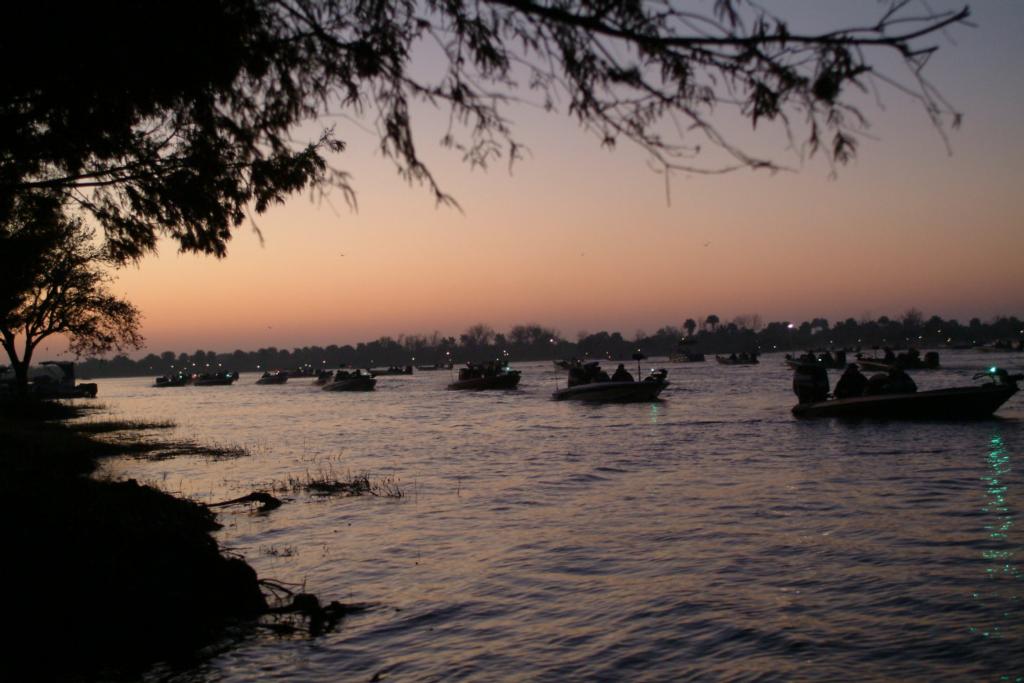
It’s shaping up to be a happy new year for Stren Series Southeast Division anglers, as competition kicks off Jan. 3 on Lake Okeechobee, the traditional season-opening destination. While rumors are swirling about the Big O’s apparent lack of fishability, things may not be as bad as they seem, because at the end of the day, Okeechobee is still chock-full of hefty bass.
Other familiar events on the 2007 Stren Southeast schedule include a stop on Lake Eufaula in early March, and that tournament will likely have competitors glued to the Weather Channel in the days preceding the event. The Southeast Division also returns to Santee Cooper to finish the season, and once again anglers will be dodging tree stumps on their way to heavy Moultrie/Marion bass.
One new destination for Southeast Division competitors is an event on Lake Seminole in early February. While Seminole has been a popular Wal-Mart Bass Fishing League playing field for years, 2007 marks the Stren Series’ first foray onto the Georgia lake. Competition there should be nothing if not interesting, as locals say Seminole is quite the finicky foe.
Southeast Division competitors will notice a change in the daily format this season, as the full field of as many as 200 pros and 200 co-anglers will compete for three days in 2007 rather than the traditional two days. The top 10 competitors in each division after three days of competition will advance to the final day, where the winners will be determined by the heaviest four-day catch.
Overall, the lakes on the Southeast Division schedule promise to yield lots of camera-ready bass, and competitors will need to sharpen a different set of skills for every one.
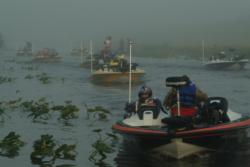 Lake Okeechobee
Lake Okeechobee
Okeechobee, Fla.
Jan. 3-6
Anglers who have heard the rumors that Lake Okeechobee will yield less of a bounty than usual should reconsider their sources. Although the lake may not be in its prime right now, it shouldn’t be nearly as difficult to fish as some would suggest. In fact, Florida pro Bobby Lane argues that the current downswing will only make the fishing hotter on the Big O in the future.
Still, Okeechobee could feel like a different lake to competitors who have fished it numerous times in the past.
“It’s kind of iffy,” said Lane, adding that the water levels should be around 11 1/2 feet by tournament time. “There will still be some fish on the banks, though most of them will be in the canals. We’ll have a decent tournament.”
Lane also says the full moon that will hang over Stren competitors that week will only help matters, meaning the fish will be eager to spawn. One notable difference will likely be a dearth of anglers in hotspots of yesteryear, including the Monkey Box and Moonshine Bay. This year’s cluster of boats will be found in the canals and river systems.
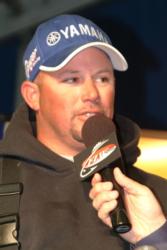 “There are several of them,” Lane said. “You’ve got Okee-Tantie, Indian Prairie, Taylor Creek, Buckhead … all of those will be very accessible. There’s tons of water there, and that’s where all the bigger fish will be.”
“There are several of them,” Lane said. “You’ve got Okee-Tantie, Indian Prairie, Taylor Creek, Buckhead … all of those will be very accessible. There’s tons of water there, and that’s where all the bigger fish will be.”
And though the water is indeed low, Lane says the patient angler will realize how big the payoff will be in just a couple short years.
“It’s great for the lake, the water being low,” he said. “It’s giving the grass a chance to grow all the way around the lake. In the long run, it’s great for the lake. It will take a couple of years, so you’ve got to get through the tough times.”
Besides, Lane says, it’s still Okeechobee, meaning that on any given cast you could reel in a 10-pounder.
“It’s hard to do that anywhere else,” Lane said. “There will be several 8- to 10-pounders weighed in, and there will be a lot of them caught over four days.”
A change in the lake also means a change in typical Okeechobee methods, meaning the Big O standard of flipping is on its way out – for now. Lane thinks that the current conditions call for Carolina-rigging and crankbait fishing.
“This year, it’s going to be the guy who can find a little something all to himself, kind of a transition area,” Lane said. “The guy who can figure the fish out on one end of the lake and also the other end (will win the tournament). I don’t think it’s going to be a one-spot deal this time. You need to put the whole lake together and be ready when the weather changes.”
Even under tough conditions, Lane expects the winner to bring in at least 50 pounds over four days. Even when the tough gets going, the Big O is still the Big O.
Lake Seminole
Bainbridge, Ga.
Jan. 31-Feb. 3
This event marks the Stren Series’ first visit to Georgia’s Lake Seminole, and according to local pro Michael Conley, competitors could leave there feeling slightly less than Georgia peachy.
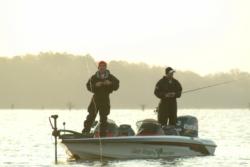 “In my opinion, you’re going to see the toughest tournament for the Southeast Division,” said Conley, who knows a thing or two about Seminole, having lived there his entire life. “Most of the time it’s a pretty tough lake. Everything in this tournament will depend 100 percent on the weather.”
“In my opinion, you’re going to see the toughest tournament for the Southeast Division,” said Conley, who knows a thing or two about Seminole, having lived there his entire life. “Most of the time it’s a pretty tough lake. Everything in this tournament will depend 100 percent on the weather.”
Lake Seminole sits so far south that it is basically another Florida lake, and it acts accordingly. Therefore, water temperatures could feasibly be in the upper 50s by early February, meaning there’s a good chance some females could be moving up to spawn. Complicating matters on a tough lake like Seminole is the new three-day cut. As Conley already knows, catching fish on Lake Seminole just two days in a row is already hard enough.
“Anytime you have to find fish for three days, it’s going to be tough,” Conley said. “Lake Seminole is similar to Okeechobee – they’re still full of Florida strains of bass. But they’re very, very finicky. You can have the field coming in with 12 to 13 pounds, but you can also easily have some 30-pound sacks if the right guys get a hold of the right string of fish.”
In fact, the word that most aptly describes Lake Seminole is unpredictable. Conley feels that it’s safe to say that competitors can and will bring in 18 to 20 pounds per day.
“I may be wrong,” he said. “It’s hard to predict this lake. This lake can make a liar out of anybody.”
So with accurate predictions hard to come by, Seminole is going to be best gauged in the two weeks before the tournament. Conley says it’s the weather that occurs in that period of time that will have the greatest impact on Seminole bass.
“The fish are very hard to pattern on this lake,” he said. “Here, you can catch fish a certain way, and then fish 15 other areas the same way and not get a bite. But it can be very rewarding because it has the potential for large fish. There are a large number of bass over 7 or 8 pounds.”
Conley said under perfect conditions, it could take as much as 20 pounds per day to win. But with the lake being as unpredictable as it is, the winner could have a 70-pound, four-day weight just as easily as a 50-pound cumulative sack.
One of Seminole’s advantages is that it can play to a lot of anglers’ strengths. Conley says there are all kinds of ways to catch bass on Lake Seminole, with the most productive technique (at least in early February) likely being the drop-shot.
“Everybody should be able to fish their strengths,” he said. “If they like to drop-shot or crank really deep or Carolina-rig or flip, they ought to be able to do that because the fish are going to be getting close to staging. There are lots of different ways to catch them here because there is so much structure – rocks, stumps, ledges, hydrilla beds, water hyacinths. The fish are going to relate to all of that stuff, though naturally they’re going to relate to the grass better. The trick is knowing what grass they relate to best.”
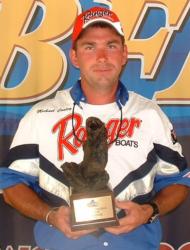 Conley – a 2007 BFL All-American qualifier – said that competitors will be bringing in all largemouth from the predominantly shallow lake. However, Conley acknowledges that it is the relative lack of depth that makes Seminole the shifty character it is.
Conley – a 2007 BFL All-American qualifier – said that competitors will be bringing in all largemouth from the predominantly shallow lake. However, Conley acknowledges that it is the relative lack of depth that makes Seminole the shifty character it is.
“That’s why the water temperature affects the fishing so much,” he said. “Right now it’s in prime shape. It is really coming back and getting better and better every year. There’s more grass on the lake this year than there has been in the last 10 years.”
The prolific grass, along with the weather, will ultimately decide Seminole’s tournament-time behavior as well as determine the event’s outcome.
“I don’t know how much of the grass is going to die down, but it’s going to die down,” Conley said. “That grass is very key, and how much it falls from the cold weather is very important. A lot is going to depend on how much cold air we get between now to then and how fast it warms up.”
Lake Eufaula
Eufaula, Ala.
March 7-10
At the Lake Eufaula event in early March, Stren competitors will be battling that ever-changing friend/foe, Mother Nature. According to Stren Eufaula standout Koby Kreiger of Okeechobee, Fla., weather will mean everything to competitors that week.
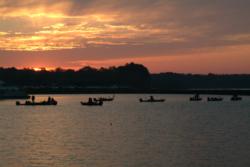 Kreiger, who has six top-10 finishes and one win in Stren Series competition on Lake Eufaula, says any time is a good time to fish the south Alabama lake, which straddles the Alabama/Georgia state line. However, just how good will depend on how the winter goes.
Kreiger, who has six top-10 finishes and one win in Stren Series competition on Lake Eufaula, says any time is a good time to fish the south Alabama lake, which straddles the Alabama/Georgia state line. However, just how good will depend on how the winter goes.
“It’s all weather-oriented,” Kreiger said of Eufaula fishing. “If we have a warm winter and early spring, the fishing will be fantastic. Otherwise, it could be pretty tough.”
The Stren Series visited Eufaula at about the same time last year, and weather temperatures reached the upper 60s and low 70s while falling to the upper 30s and low 40s. And despite falling water levels, the finalists still brought in nearly 20 pounds per day – sometimes more.
The bulk of those weights are made up with largemouth, though Kreiger said there are a few spotted bass to be had on Lake Eufaula. Also adding to the lake’s appeal is the variety of presentations that Eufaula bass will respond to, particularly during that time of year.
“You can catch them doing a little bit of everything,” Kreiger said. “They can be found out deep on the ledges, and if the weather cooperates, you can catch them in 2 feet of water. I’d say it’s going to be more ledge fishing unless the weather’s warm.”
 Kreiger likes 1-ounce spinnerbaits off the ledges as well as shallow-running crankbaits in early March. “That might be the best two ways to catch them,” he said.
Kreiger likes 1-ounce spinnerbaits off the ledges as well as shallow-running crankbaits in early March. “That might be the best two ways to catch them,” he said.
The fact that the bass are in their prespawn phase in early March also makes them ripe for the catching.
“If it’s a good prespawn, you can fish in one area of the lake for four days because they’ll be coming to you every day,” Kreiger said. “They’ll be coming up to spawn and feed, and they’ll just keep replenishing.”
Kreiger said most fishing on Eufaula is done in 25 feet of water or less, though he predicts the 10- to 12-foot range will be ideal at tournament time.
“Fishing according to the water temperature is the key to fishing Lake Eufaula,” Kreiger said. “I think with four-day weights, it’ll take somewhere between 60 and 70 pounds to win.”
Santee Cooper
Manning, S.C.
April 11-14
Like everywhere else, what happens on lakes Moultrie and Marion – together known as Santee Cooper – is largely dependent on what time spring decides to roll around. But with temperatures near 70 by mid-April and water temperatures over 50 degrees, conditions are definitely going to be plenty warm for a solid postspawn tournament.
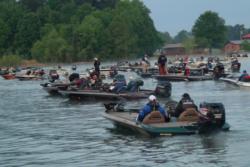 But while mid-April might be just a few weeks past the prime fishing season on Santee Cooper, local hotshot Ricky Shumpert says the tournament still falls during an excellent time period.
But while mid-April might be just a few weeks past the prime fishing season on Santee Cooper, local hotshot Ricky Shumpert says the tournament still falls during an excellent time period.
“It’s going to be a shallow bite,” Shumpert said. “There will be a little bit of sight-fishing going on, a little bit of top-water and a little bit of spinner-bait fishing.”
Shumpert also expects buzzbaits, Texas-rigged worms and floating worms to be productive, and he predicts that it could take as much as 15 to 17 pounds per day to win the event. With the hot bite found in shallow water, the winner will almost certainly bring in bass from Lake Moultrie.
“Moultrie has a lot more shallow-water structure for the fish to congregate around, and it’s a better lake to fish in the spring,” he said.
With the spawn most likely completed by the time Stren competitors roll in, Shumpert says the ideal way to catch Santee Cooper largemouth bass is to keep moving.
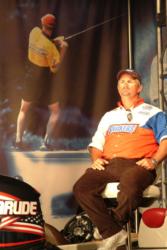 “It’ll be a fast bite,” he said. “Just cover a lot of water and keep moving; that’s how you’re going to catch fish.”
“It’ll be a fast bite,” he said. “Just cover a lot of water and keep moving; that’s how you’re going to catch fish.”
Unfortunately, covering a lot of water on Santee Cooper can wreak havoc on your equipment, as the area is infamous for its standing timber and other obstacles known to ruin more than a few hulls.
“There are stumps even in the middle of the lake,” Shumpert said. “You have standing timber that’s barely under the surface of the water. You definitely have to be careful where you’re running at Santee, and it is not a bad idea to stay in the safe boat channels if you’re not familiar with the lake.”
Indeed, Shumpert said the majority of the lake is 15 feet or less, so staying careful while hunting for the winning stringer will be of the utmost priority on the Santee Cooper lakes.